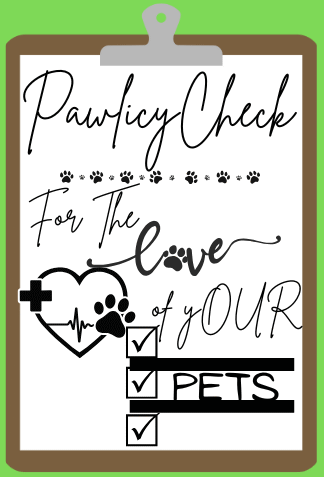Exploring Pet Insurance Options
Pet insurance has gained significant traction among pet owners as a vital tool for managing unexpected veterinary expenses. Various types of pet insurance plans cater to different needs, each offering unique features that pet parents should consider. Primarily, the two main categories of pet insurance are accident-only plans and comprehensive plans. Accident-only plans cover emergencies stemming from accidents, such as broken bones or ingestion of foreign objects, making them a cost-effective choice for pet owners who seek basic protection. However, these plans do not extend coverage to illnesses or routine care.
On the other hand, comprehensive plans offer a more extensive safety net by covering a broader range of health-related issues, including illnesses, surgeries, and even routine check-ups, depending on the policy. While these comprehensive plans generally come with higher monthly premiums, they provide a greater return on investment during long-term ownership of a pet. Understanding the significance of monthly premiums is crucial, as it impacts a pet owner’s budget and decision-making process.
Another essential aspect to examine while exploring pet insurance options is the deductible. The deductible is the amount a policyholder must pay out-of-pocket before the insurance kicks in. Higher deductibles often lead to lower monthly premiums, but they can result in higher costs during emergency situations. Additionally, pet owners must be aware of coverage limits, which cap the maximum amount the insurance will pay in a given year or lifetime. Choosing a policy with suitable coverage limits is fundamental to ensuring comprehensive protection for one’s pet.
Ultimately, having pet insurance brings peace of mind and financial security to pet owners in times of crisis. With the right knowledge, pet parents can confidently select the most suitable insurance plan to safeguard their furry companions against unexpected health issues.
Maximizing Your Pet’s Health: Care Tips and Financial Planning
Ensuring the health and well-being of your pet requires a multifaceted approach that encompasses regular wellness checks, preventive care measures, and lifestyle adjustments. Routine wellness examinations are crucial as they allow veterinarians to monitor your pet’s overall health, detect potential issues early, and provide vaccinations to ward off diseases. Scheduling these check-ups at least once a year is advisable for adults and more frequently for younger or senior pets, as they often require more attentive care.
Preventive care is another essential aspect of pet wellness that includes vaccinations, flea and tick control, and regular dental hygiene. Vaccinations are vital for preventing several serious diseases, while dental care helps to avoid mouth infections and maintain overall health. Regular tooth brushing and dental treats can also enhance your pet’s oral hygiene. Furthermore, a balanced diet and routine exercise contribute significantly to improving your pet’s longevity and quality of life. Providing a nutritious diet and encouraging physical activity fosters a healthy weight, which can effectively prevent various health problems.
In parallel to the care strategies mentioned above, financial planning is an indispensable part of managing your pet’s health. Budgeting for routine expenses such as food, grooming, and veterinary visits is fundamental. However, pet owners should also anticipate unexpected expenses that may arise from sudden health issues. Setting aside an emergency fund can not only alleviate stress during unexpected situations but also empower pet owners to make informed decisions regarding their pet’s care without the pressure of immediate financial constraints. By integrating effective care strategies with sound financial planning, pet owners can enhance their pet’s quality of life while maintaining control over their financial obligations.
